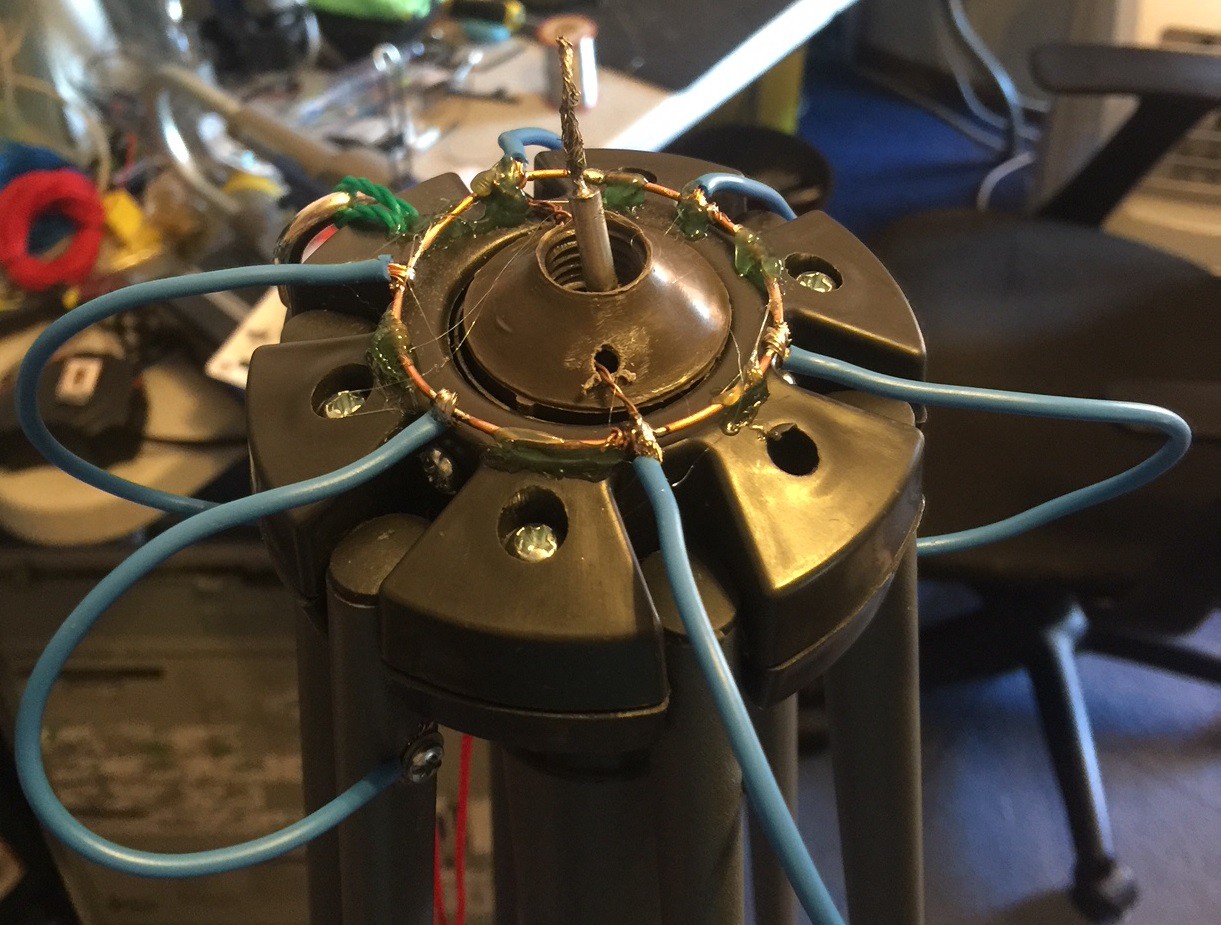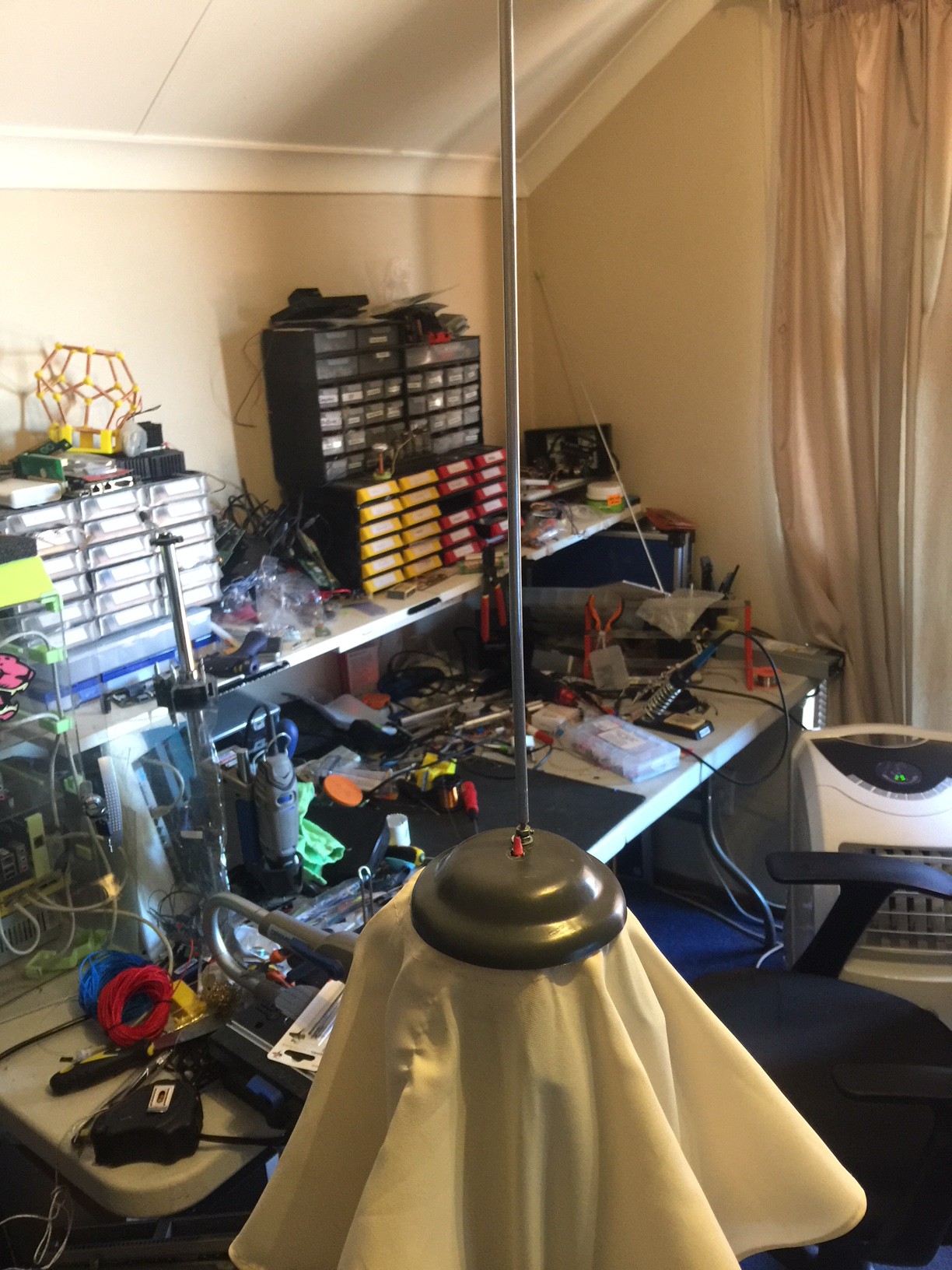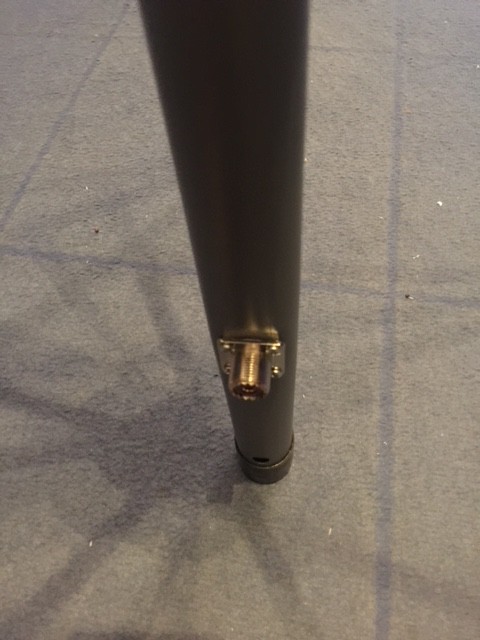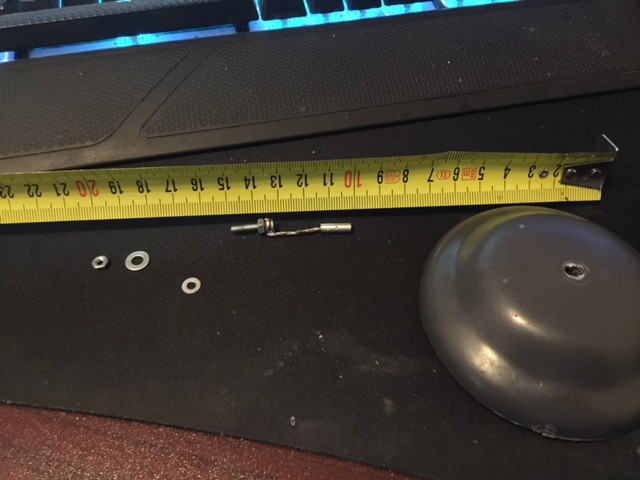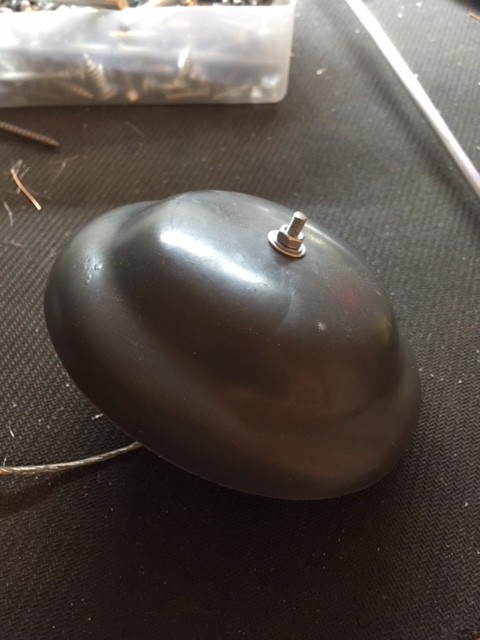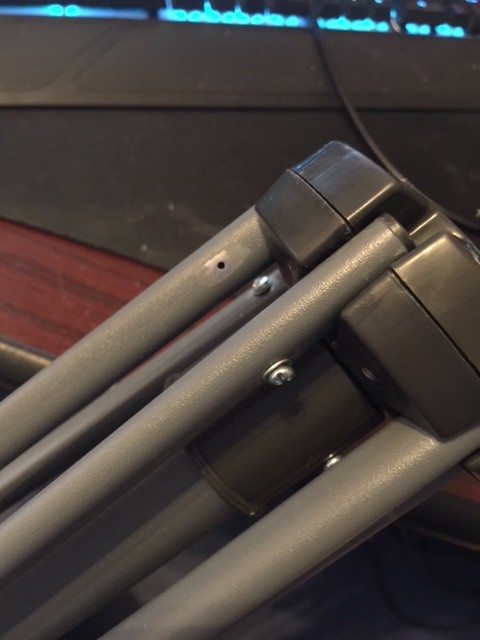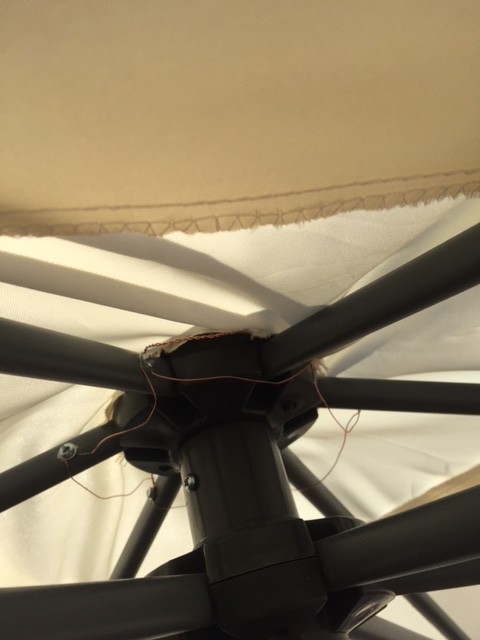-
Weather damage and repairs
12/28/2017 at 13:30 • 0 commentsI upgraded my radio shack somewhat for christmas with an Icom IC-7100. Now I have access to much higher transmission power as well as an SWR meter which it has built in. With the canvas open at 145Mhz I got a VSWR of around 1.1 and with the canvas closed it increased to 1.5. This makes an interesting experiment for a future project, the change is expected but it would be interesting to see where the center frequency moves as the angle of the grounding plane cone changes.
We've had a fairly incredible storm season this year and the umtenna handled them relatively well. Still after a few weeks of sitting out in torrential rain, one small tornado, and several hail storms only a small corner of the covering has started to tear, the top whip was heavily corroded and several of the ground plane wires had broken from corrosion and stress.
My biggest concern by far though was my safety when a violent lightning storm can surprise you on a sunny day. Disconnecting the antenna feed is easy enough but I really don't want the canvas to be opened up and grabbing a metal pole - even an un-grounded one - is just asking for trouble. So I had an idea to try and automate opening and closing the canvas. More on that later.
Modifications ahoy! The ground radials now terminate onto a copper ring which is fed from two ends. This should provide a more reliable ground to all the radials. There was also some corrosion which I sanded off and plated with some solder paste to slow down future rust a bit.
The next issue to tackle was the terminal for the whip. The previous build twisted the coax too much when screwing the top cover back in place. Instead of having the screw terminal in the center of the thread I drilled a new hole in it slightly to the side of that and left the center hole for the tip of the conductor to poke through freely while the cover is screwed on and can then be connected to the whip.
And we're back in action. Re-tested and SWR is still great with this crazy thing.
Next up I'd like to make an interchangeable HF whip for the umtenna and see if I can tune it up with the AH-4 ATU.
Before that though I've 3D printed a worm gear winch with two spools wound in opposite directions. One line goes to the top of the antenna through two pulleys to create an upward force on the slide, the other line also terminates to the slide but providing a downward pull. That way the linear slide to open and close the canvas can be manipulated remotely by driving the winch forward or backwards. But why stop there, I'd like to calibrate that somewhat to give me digital control over the ground plane angle to plot the change resonance and possibly provide more precise tuning, perhaps even automatically.
-
First build and test
11/26/2017 at 13:51 • 0 commentsI drilled a 15mm hole for the SO239 connector in the umbrella mast and then hit it with a hammer for a bit to flatten it. Drilled some 2mm holes and drove some self tapping 3mm screws in. They held very well so I used the same for the rest of the build too.
I soldered some RG58 coax to the connector and ran that up to the top of the umbrella. The pole is grounded at the bottom where the connector bolts onto it however the radials are insulated from the pole, so it was a bit tricky getting the right electrical length of the main radiating element while splitting out the coax shield to the radials.
I also couldn't figure out how to reattach the top of the umbrella which holds the cloth without breaking the coaxes connection to the main quarter wave element. So I drilled and tapped an M3 thread into a 5mm X 470mm aluminum rod, that just left having a screw poke out the top of the umbrella for it to be screwed on or off.
The reason my main element is quite a bit less than a quarter wave (500mm) is because there's about 30mm of the coax exposed between where the metal pole ends (and the coax is stripped and separated) and where the element screws into the top. It should be in total a touch more than 500mm, once I get an SWR meter I can trim it down - or even make a longer internal thread so it can be tuned by adjusting the screw.
All that remained at this point was connecting up all the ground radials with some copper wire and screws. First I filed off the paint around the holes and added a washer. I actually used a technique I saw on youtube for doing aircraft lock wires
I forgot to take a picture of this while I was doing it but it's clearly visible how it works close up when unfolded.I drilled two holes either side of where the cloth holder (is there a technical term for this?) screws into the top of the umbrellas mast and twisted the coax shield in two halves just for some extra reliability I guess and perhaps more evenly distribute the ground into the radials.
All that remained was soldering the screw arrangement onto the coax, so I used a copper ferule and then twisted the screw a few turns in reverse so it would have less tortional stress on it when I screwed it back in.
And that's all she wrote![]()
![]()
I tested it out for a bit, got good signal reports and was receiving well just with my UV5R handheld connected to it running on 145MHz
I still need to test the SWR, I'm not entirely sure if the length of the ground radials so who knows what's really going on. But I will update when I get a chance so thats all for now :)
 Colin Alston
Colin Alston